Abstract
The effects of phenobarbital treatment for 12 days on the regional distribution of blood flow and on the disposition of two model drugs, antipyrine and d-propranolol, have been determined in six unanesthetized rhesus monkeys. Phenobarbital significantly increased total hepatic blood flow from 179±15 to 239±27 ml/min. Liver weight was increased to a similar degree (34%) in phenobarbital-treated animals as compared to control monkeys. The clearance of both antipyrine and d-propranolol was increased and the half-life decreased significantly by phenobarbital. Analysis of the data by a perfusion-limited pharmacokinetic model showed that the changes in antipyrine clearance were due almost entirely to enzyme induction. On the other hand, with d-propranolol, the increase in liver blood flow contributed as much to the enhanced clearance as did the stimulation of drug metabolism. The mechanism by which phenobarbital produces the frequently observed increase in drug clearance, therefore, depends upon the initial clearance value of the drug. For low clearance drugs like antipyrine, clearance changes occur largely as a result of enzyme induction. With higher clearance drugs, the effects of increased hepatic blood flow become progressively more important the greater the initial clearance value.
Full text
PDF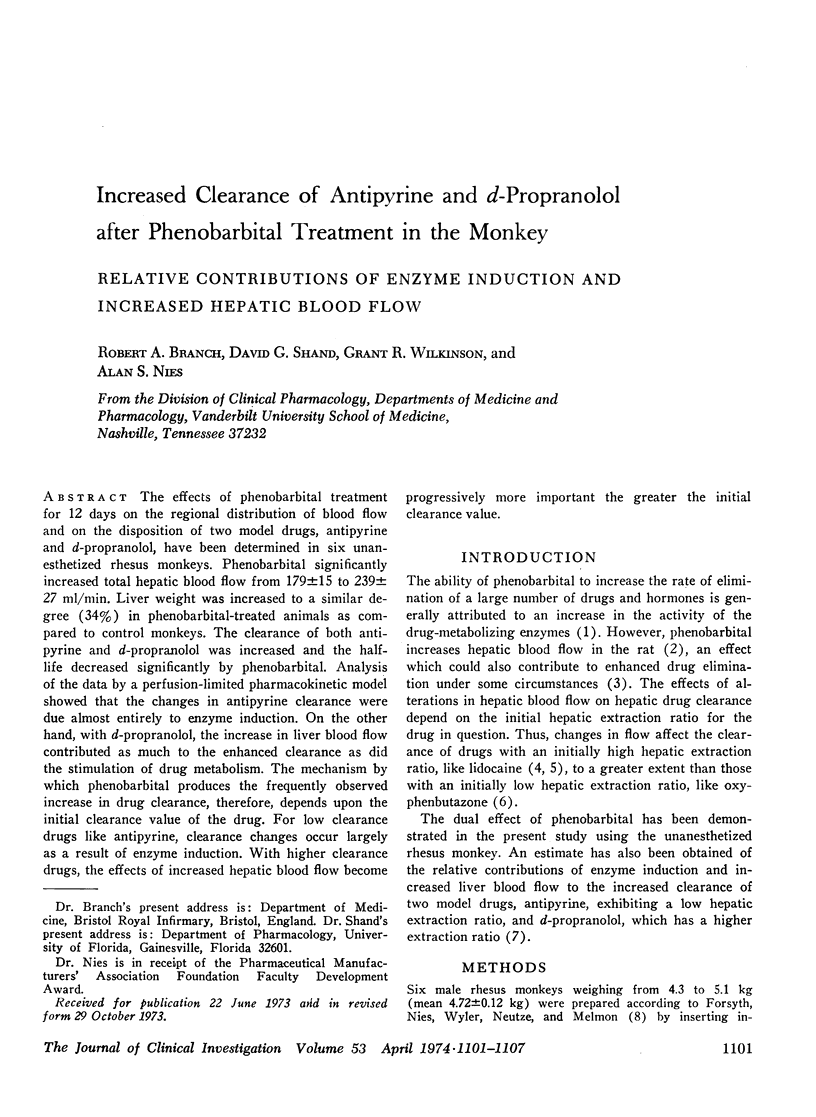
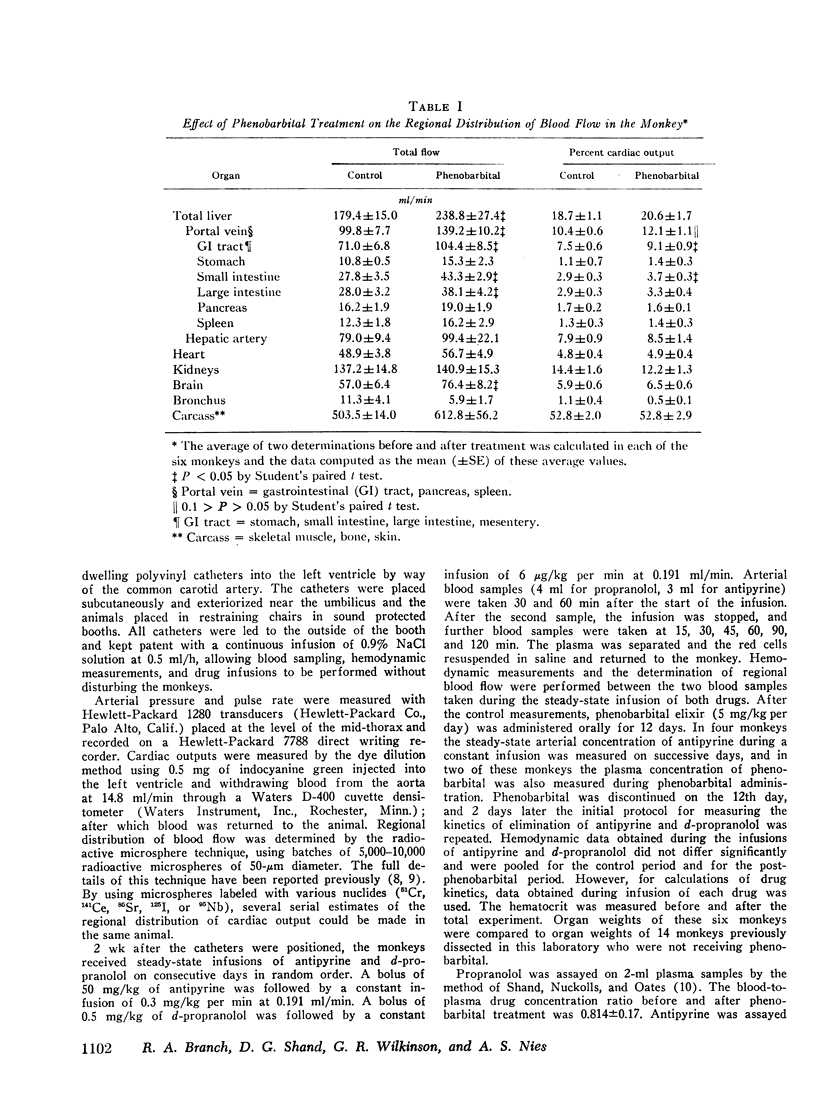
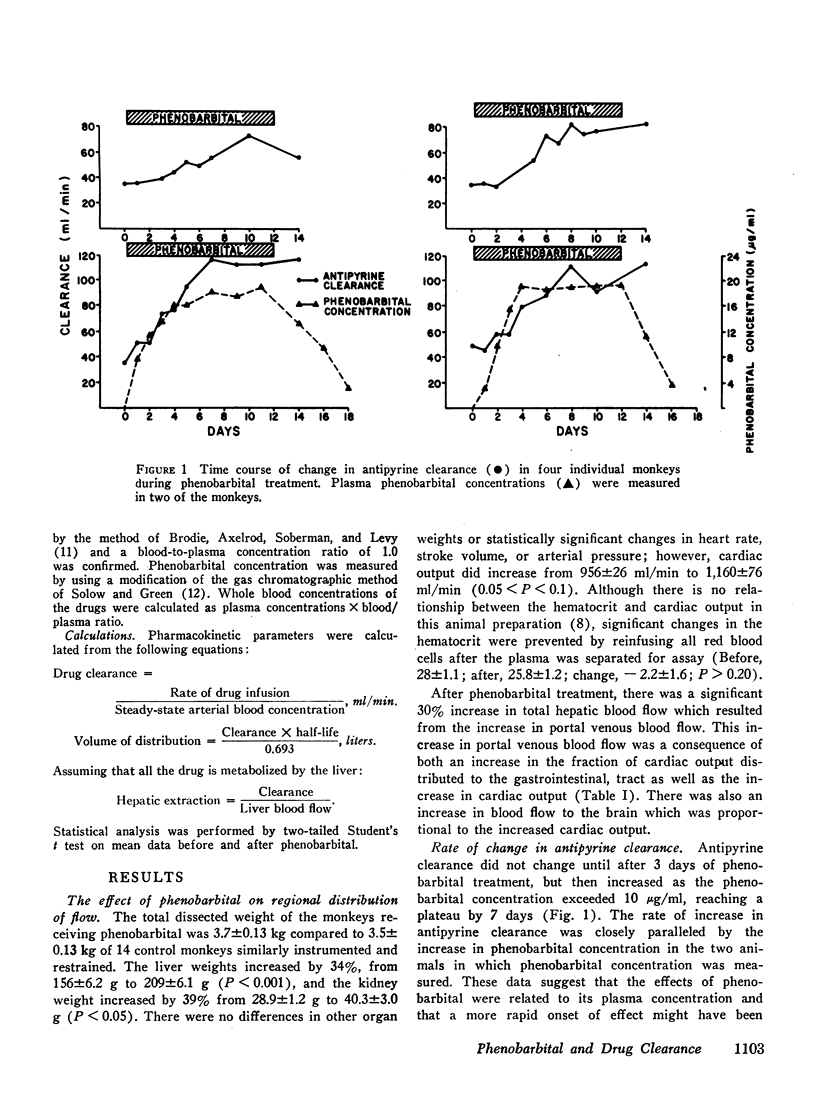
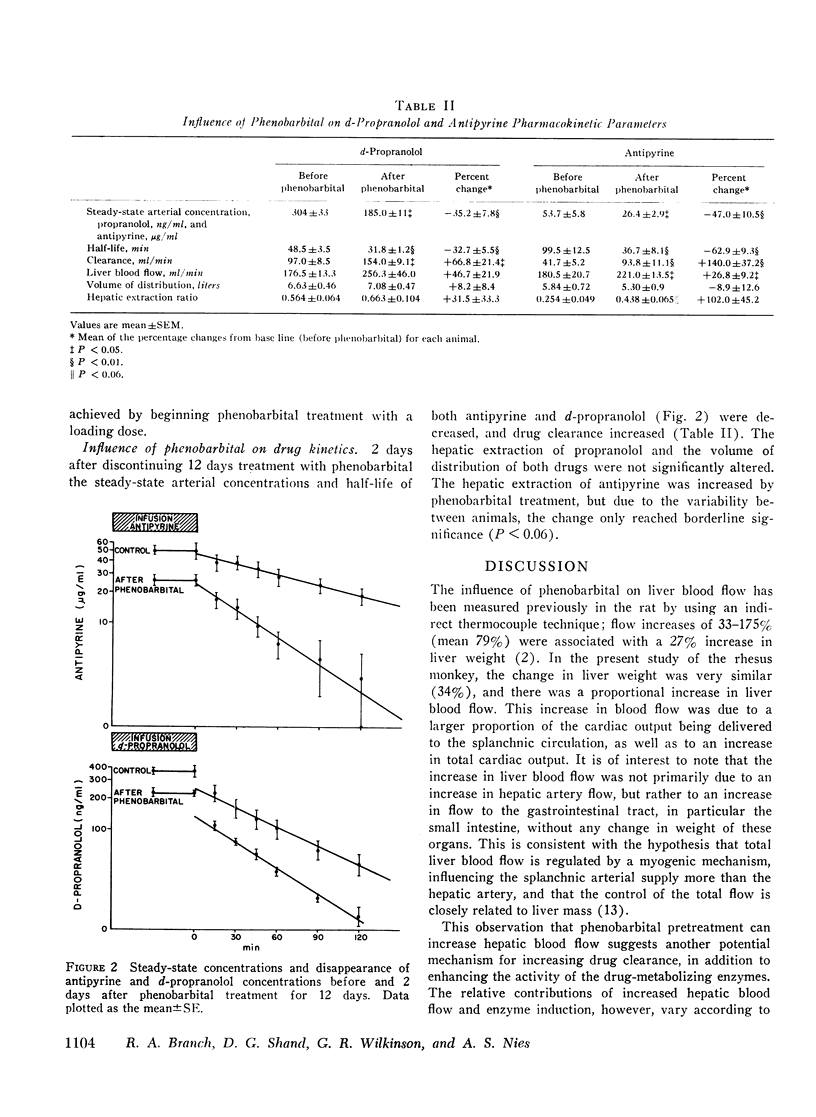
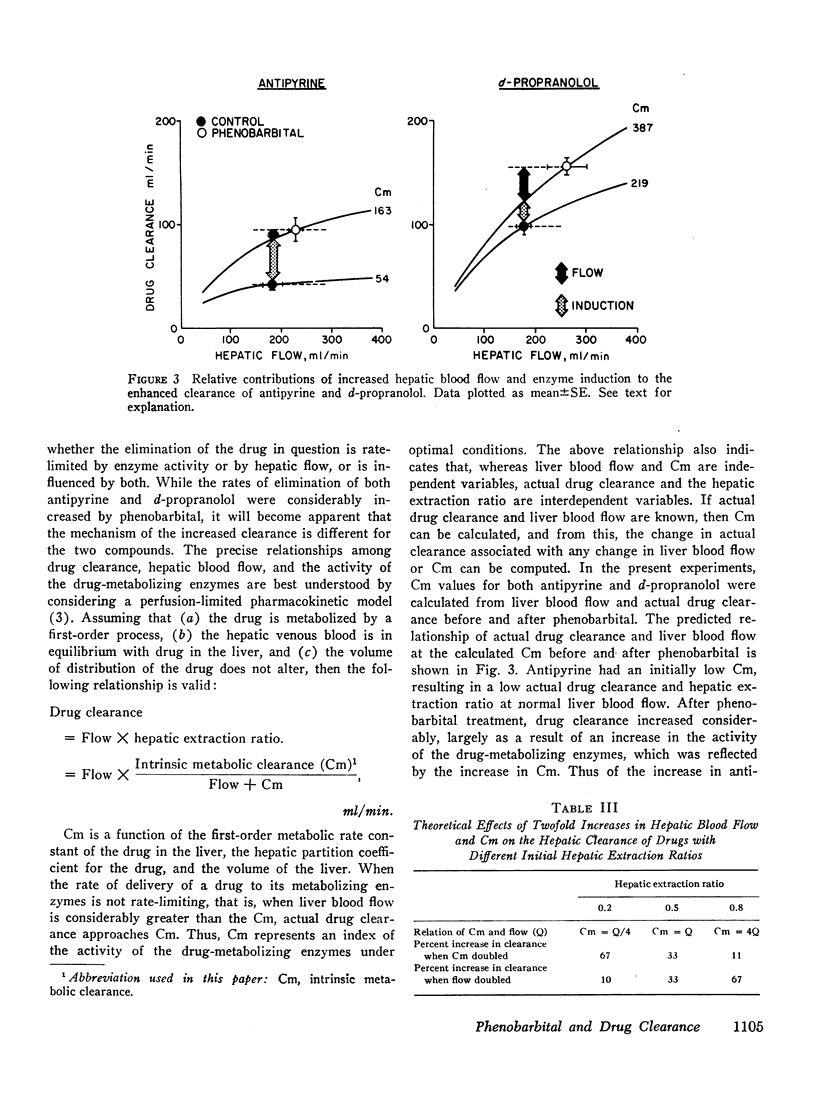
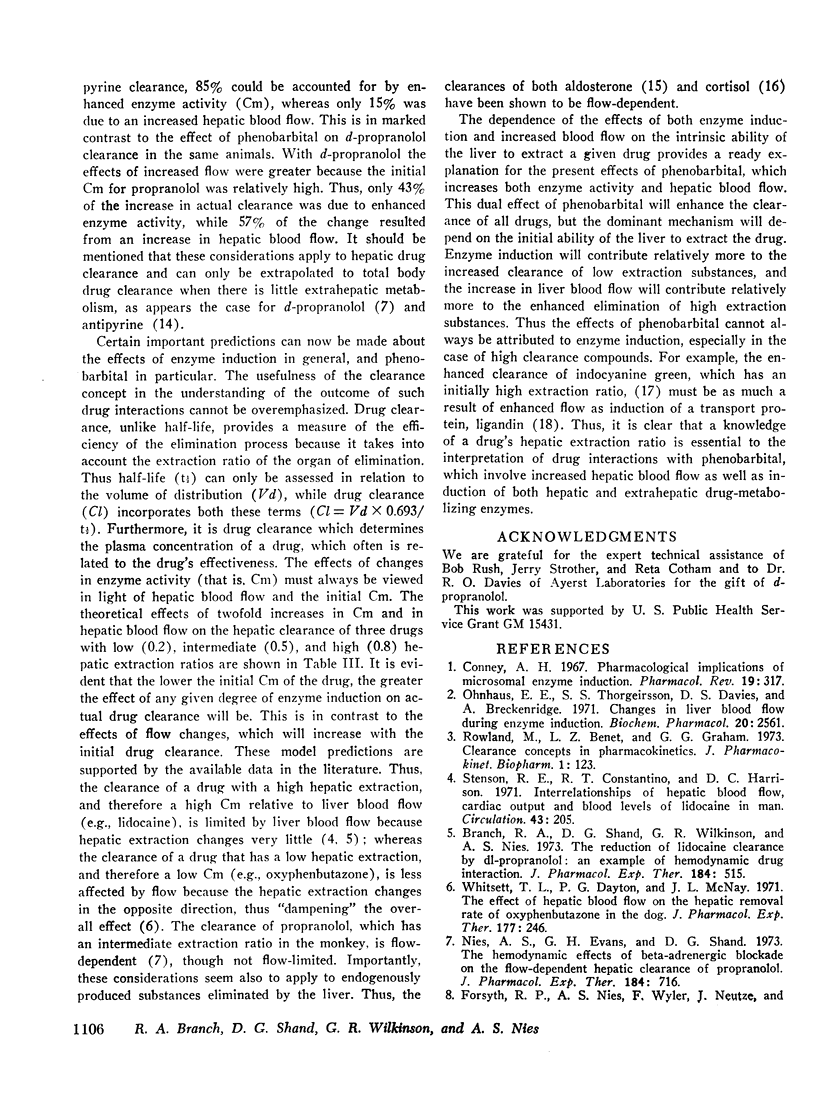
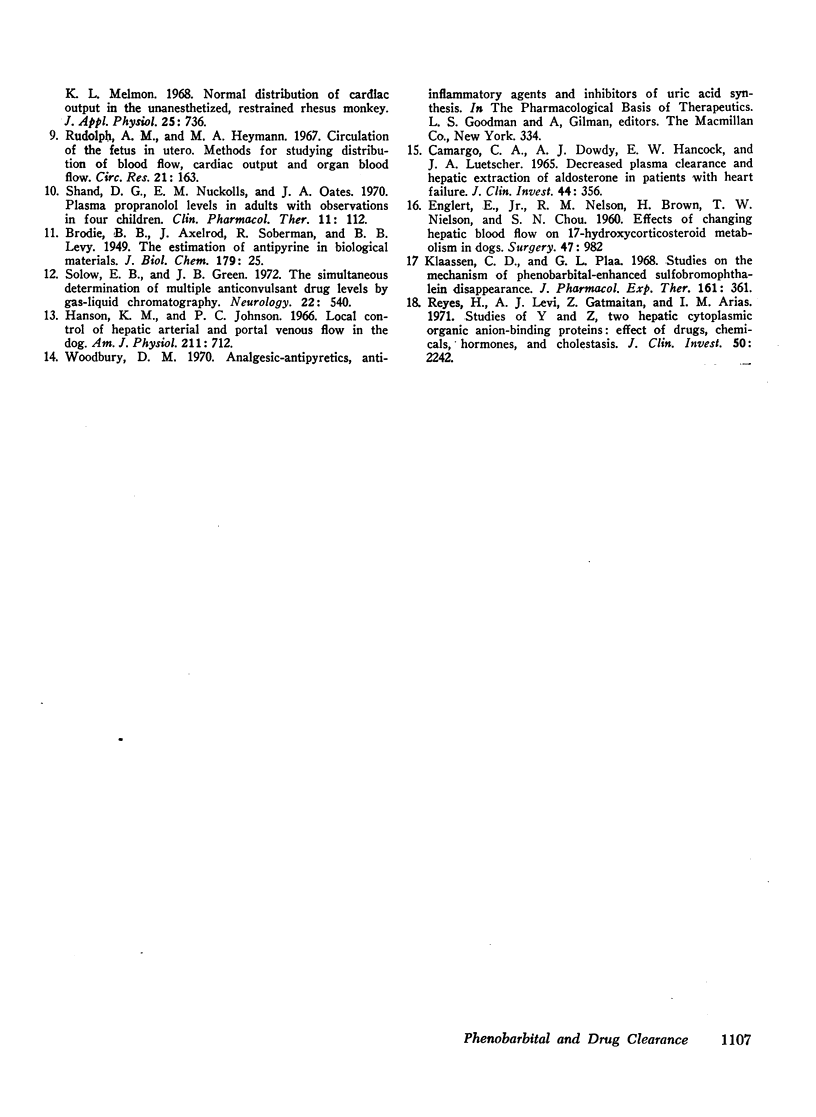
Selected References
These references are in PubMed. This may not be the complete list of references from this article.
- Branch R. A., Shand D. G., Wilkinson G. R., Nies A. S. The reduction of lidocaine clearance by dl-propranolol: an example of hemodynamic drug interaction. J Pharmacol Exp Ther. 1973 Feb;184(2):515–519. [PubMed] [Google Scholar]
- CAMARGO C. A., DOWDY A. J., HANCOCK E. W., LUETSCHER J. A. DECREASED PLASMA CLEARANCE AND HEPATIC EXTRACTION OF ALDOSTERONE IN PATIENTS WITH HEART FAILURE. J Clin Invest. 1965 Mar;44:356–365. doi: 10.1172/JCI105149. [DOI] [PMC free article] [PubMed] [Google Scholar]
- Conney A. H. Pharmacological implications of microsomal enzyme induction. Pharmacol Rev. 1967 Sep;19(3):317–366. [PubMed] [Google Scholar]
- ENGLERT E., Jr, NELSON R. M., BROWN H., NIELSEN T. W., CHOU S. N. Effects of changing hepatic blood flow on 17-hydroxycorticosteroid metabolism in dogs. Surgery. 1960 Jun;47:982–986. [PubMed] [Google Scholar]
- Forsyth R. P., Nies A. S., Wyler F., Neutze J., Melmon K. L. Normal distribution of cardiac output in the unanesthetized, restrined rhesus monkey. J Appl Physiol. 1968 Dec;25(6):736–741. doi: 10.1152/jappl.1968.25.6.736. [DOI] [PubMed] [Google Scholar]
- Hanson K. M., Johnson P. C. Local control of hepatic arterial and portal venous flow in the dog. Am J Physiol. 1966 Sep;211(3):712–720. doi: 10.1152/ajplegacy.1966.211.3.712. [DOI] [PubMed] [Google Scholar]
- Klaassen C. D., Plaa G. L. Studies on the mechanism of phenobarbital-enhanced sulfobromophthalein disappearance. J Pharmacol Exp Ther. 1968 Jun;161(2):361–366. [PubMed] [Google Scholar]
- Nies A. S., Evans G. H., Shand D. G. The hemodynamic effects of beta adrenergic blockade on the flow-dependent hepatic clearance of propranolol. J Pharmacol Exp Ther. 1973 Mar;184(3):716–720. [PubMed] [Google Scholar]
- Ohnhaus E. E., Thorgeirsson S. S., Davies D. S., Breckenridge A. Changes in liver blood flow during enzyme induction. Biochem Pharmacol. 1971 Oct;20(10):2561–2570. doi: 10.1016/0006-2952(71)90164-x. [DOI] [PubMed] [Google Scholar]
- Reyes H., Levi A. J., Gatmaitan Z., Arias I. M. Studies of Y and Z, two hepatic cytoplasmic organic anion-binding proteins: effect of drugs, chemicals, hormones, and cholestasis. J Clin Invest. 1971 Nov;50(11):2242–2252. doi: 10.1172/JCI106721. [DOI] [PMC free article] [PubMed] [Google Scholar]
- Rowland M., Benet L. Z., Graham G. G. Clearance concepts in pharmacokinetics. J Pharmacokinet Biopharm. 1973 Apr;1(2):123–136. doi: 10.1007/BF01059626. [DOI] [PubMed] [Google Scholar]
- Rudolph A. M., Heymann M. A. The circulation of the fetus in utero. Methods for studying distribution of blood flow, cardiac output and organ blood flow. Circ Res. 1967 Aug;21(2):163–184. doi: 10.1161/01.res.21.2.163. [DOI] [PubMed] [Google Scholar]
- Shand D. G., Nuckolls E. M., Oates J. A. Plasma propranolol levels in adults with observations in four children. Clin Pharmacol Ther. 1970 Jan-Feb;11(1):112–120. doi: 10.1002/cpt1970111112. [DOI] [PubMed] [Google Scholar]
- Solow E. B., Green J. B. The simultaneous determination of multiple anticonvulsant drug levels by gas-liquid chromatography. Method and clinical application. Neurology. 1972 May;22(5):540–550. doi: 10.1212/wnl.22.5.540. [DOI] [PubMed] [Google Scholar]
- Stenson R. E., Constantino R. T., Harrison D. C. Interrelationships of hepatic blood flow, cardiac output, and blood levels of lidocaine in man. Circulation. 1971 Feb;43(2):205–211. doi: 10.1161/01.cir.43.2.205. [DOI] [PubMed] [Google Scholar]
- Whitsett T. L., Dayton P. G., McNay J. L. The effect of hepatic blood flow on the hepatic removal rate of oxyphenbutazone in the dog. J Pharmacol Exp Ther. 1971 Apr;177(1):246–255. [PubMed] [Google Scholar]


